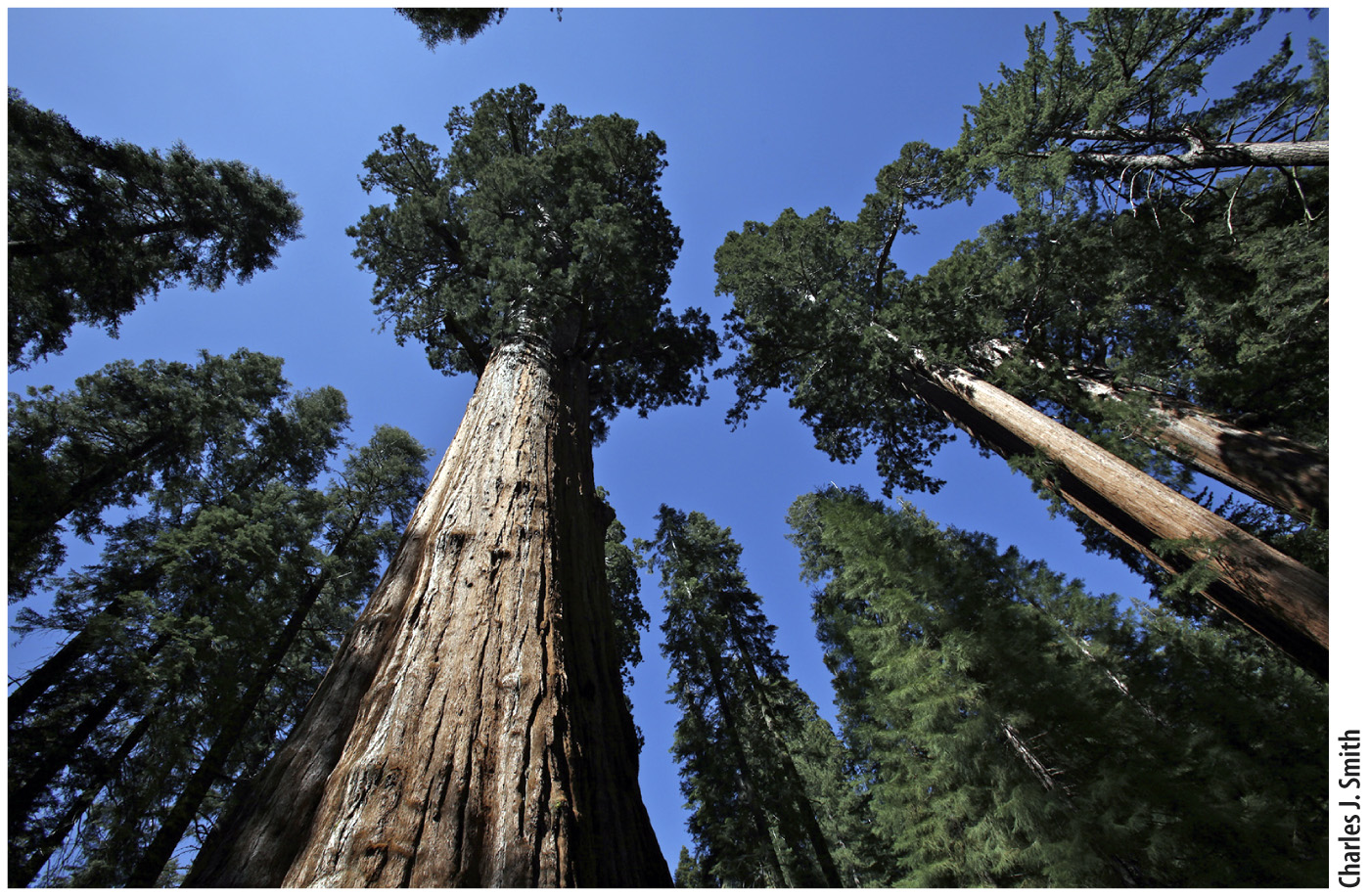Conifers are woody plants that thrive in dry and cold climates.
The approximately 630 species of conifers are, for the most part, trees. Conifers include the tallest (over 100 m) and oldest (more than 5000 years) trees on Earth (Fig. 33.17). Well-

Most conifers are evergreen, meaning that they retain their often needle-
Conifer reproduction tends to be slow: After pollination, it can take more than a year before the seeds are ready to be dispersed. Pollen is produced in small cones, and seeds in larger cones. The seed cones become woody, providing protection, as the fertilized ovules develop slowly into seeds. Conifers are wind pollinated, and most species also rely on wind for seed dispersal. However, some conifers, such as junipers and yews, produce seeds surrounded by fleshy and often brightly colored tissues that attract birds and other animals.
Conifers dominate the vast boreal forests of Canada, Alaska, Siberia, and northern Europe. Conifers tend to become more abundant as elevation increases, and they are common in dry areas, such as the western parts of North America and much of Australia. Only a small number of conifer species are found in tropical latitudes, most commonly at higher elevations. Before the rise of the angiosperms, however, conifers were more evenly distributed across the globe, including in the lowland tropics. One of the great questions in the evolutionary history of plants is why conifers were displaced from tropical latitudes by the angiosperms but continued to thrive in cold and dry environments.
An important difference between angiosperms and conifers is that angiosperms transport water in the xylem vessels, whereas conifers transport water in tracheids. In wet and warm environments, the xylem vessels of angiosperms can be both wide and long, increasing the efficiency of water transport through their stems. Thus, one hypothesis is that the evolution of xylem vessels gave angiosperms a competitive advantage in moist tropical environments. With more water flowing through their stems, angiosperms could have higher rates of photosynthesis and grow larger leaves. Once conifer populations began to dwindle, they could have disappeared completely because wind pollination requires large populations. In colder or drier regions, the dangers of cavitation due to drought or freeze followed by thaw (Chapter 29) constrain the size of angiosperm vessels. This helps level the playing field and explains the greater coexistence of conifers and angiosperms in cold or dry climates.